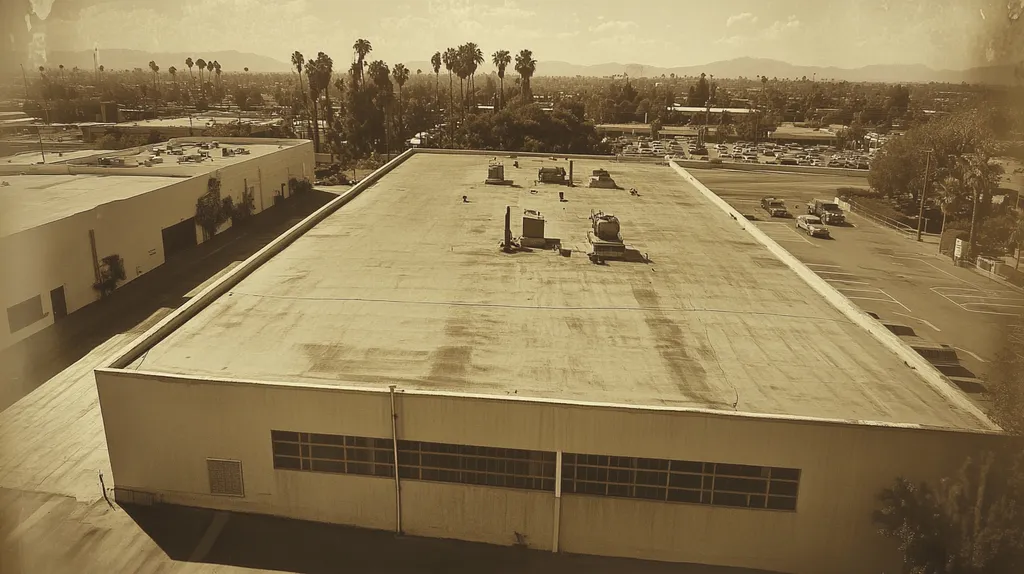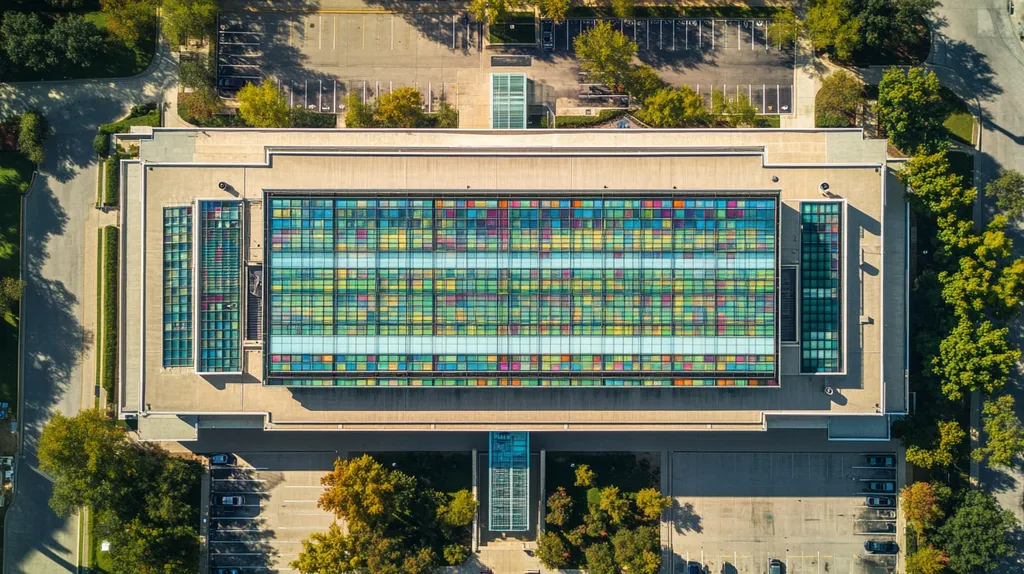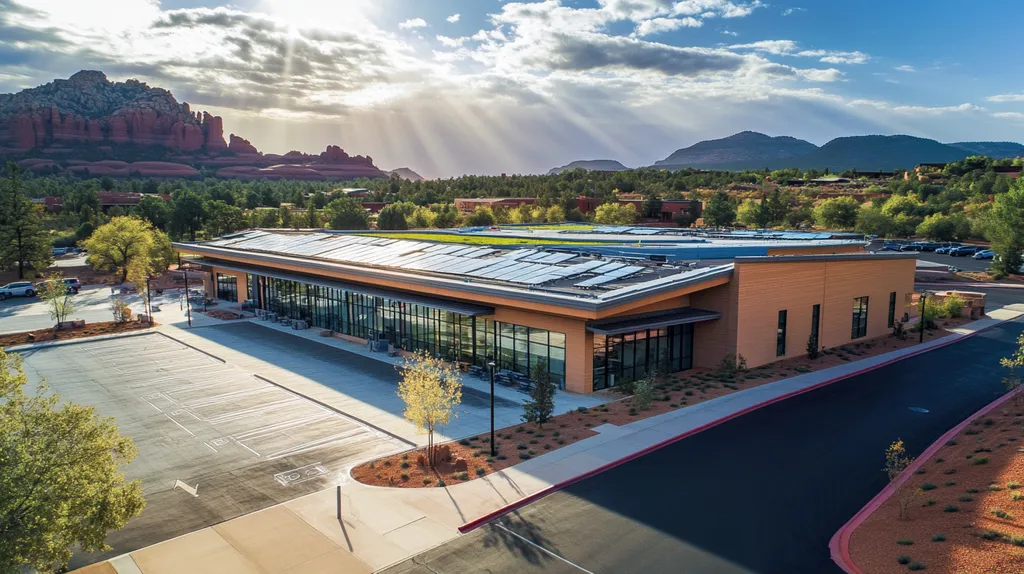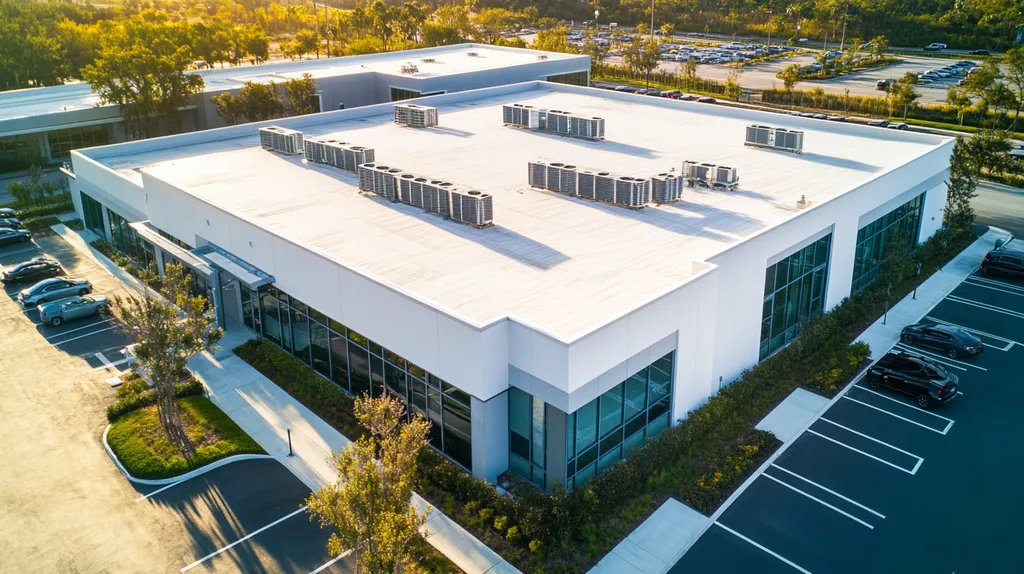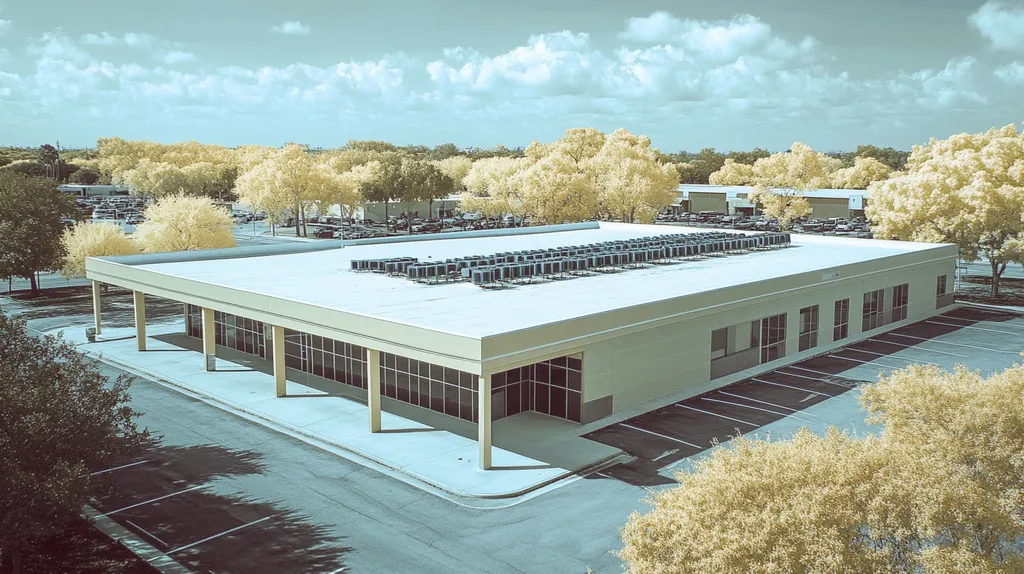Welcome to today’s Battle Royale featuring two roofing heavyweights: “TPO” in the east corner versus “PVC” in the west!
Tonight’s showdown pits these contenders against each other across six punishing rounds designed to test every aspect of their performance for Weather Considerations for Commercial Roofs.
At stake? Millions in potential costs, decades of building protection, and the critical performance demands of modern commercial and industrial facilities.
Our professional judging panel will evaluate each round on technical merit, real-world performance, and value delivery. After all six rounds, we’ll declare our ultimate champion.
Ladies and gentlemen, facility managers and building owners… it’s time to rumble!
ROUND 1: INITIAL COSTS & INSTALLATION
In today’s volatile construction market, choosing between TPO and PVC roofing systems can make or break a commercial property’s budget. With material costs fluctuating and skilled labor becoming scarcer, the initial investment decisions are more critical than ever. Understanding the true costs and installation requirements helps property owners avoid expensive mistakes and ensure optimal long-term performance.
Material Expenses
In the current market, material costs represent a significant portion of any commercial roofing project. TPO materials typically cost between $3.50 to $5.50 per square foot, making them an attractive option for budget-conscious property owners.
PVC materials command a premium price point, usually ranging from $5.50 to $7.50 per square foot. This higher cost reflects PVC’s enhanced durability and chemical resistance properties.
While TPO presents a clear initial cost advantage, proper installation quality significantly impacts its long-term weather performance and durability. (source: Ridgeline Roofing and Solar)
Based on pure material costs, TPO has the clear “ADVANTAGE” in this category.
Installation Complexity
Installation complexity directly affects labor costs and project success rates. TPO installation requires precise welding of seams but generally involves straightforward techniques that experienced crews can execute efficiently.
PVC installation demands more specialized skills and equipment, particularly for proper heat welding and detail work. These requirements often translate to higher labor costs and increased potential for installation errors.
The more straightforward nature of TPO installation makes it more accessible for qualified contractors, resulting in an “ADVANTAGE” for TPO in this category.
Project Timeline
Project duration impacts both direct costs and business disruption. TPO installations typically progress faster due to simpler application techniques and fewer specialized procedures.
PVC installations generally require more time due to their complex installation requirements and precise temperature control needs. This extended timeline can increase both labor costs and operational disruptions.
The efficiency and speed of TPO installation give it another clear “ADVANTAGE” in project timeline considerations.
ROUND 1 WINNER: TPO
ROUND 2: DURABILITY & LIFESPAN
In today’s volatile climate conditions, the durability and lifespan of commercial roofing systems have become more critical than ever. Recent weather pattern shifts have pushed roofing materials to their limits, making the choice between TPO and PVC increasingly consequential for property owners.
Understanding how these materials perform over time under various weather conditions can mean the difference between a roof that lasts decades and one that requires premature replacement. The stakes are particularly high given the substantial investment these systems represent.
Durability Against Weather Elements
TPO roofing systems demonstrate solid resistance to UV radiation and heat exposure. Their white reflective surface helps maintain cooler temperatures, reducing thermal stress and extending material longevity in warm climates.
PVC roofing exhibits superior chemical resistance and maintains flexibility across extreme temperature ranges. Its molecular structure provides enhanced protection against acid rain, industrial pollutants, and other harsh environmental conditions.
Find the best commercial roofing materials comparison now to ensure your business’s optimal protection against summer elements. PVC’s superior chemical resistance and flexibility give it a clear edge in weather durability. (source: Messing Commercial Roofing)
Based on overall weather resistance capabilities, PVC has the “ADVANTAGE” in this category.
Expected Lifespan and Warranty
TPO roofing systems typically last 15-20 years when properly installed and maintained. Manufacturers generally offer warranties ranging from 15 to 20 years, reflecting their confidence in the material’s durability.
PVC roofing systems demonstrate significantly longer lifespans, often reaching 25-30 years under normal conditions. These systems frequently come with extended warranty options up to 30 years, providing additional peace of mind for property owners.
The substantial difference in expected service life and warranty coverage gives PVC the clear “ADVANTAGE” in this category.
Performance Under Extreme Conditions
TPO systems show adequate performance under normal weather conditions but can become stressed during prolonged exposure to extreme temperatures or severe weather events. Their seam strength may become compromised over time, particularly in areas with dramatic temperature fluctuations.
PVC systems maintain their structural integrity even under severe weather conditions. Their superior flexibility and resistance to ponding water make them especially suitable for regions experiencing frequent storms or temperature extremes.
Given their enhanced resilience under challenging conditions, PVC earns the “ADVANTAGE” in this category.
ROUND 2 WINNER: PVC
ROUND 3: PERFORMANCE FACTORS
Weather performance has become increasingly critical for commercial roofing as climate patterns grow more extreme. Recent studies show that roofing system failures due to weather-related stress cost businesses millions in repairs and disruptions annually. Understanding how TPO and PVC perform under various conditions is essential for making informed decisions that protect both buildings and bottom lines.
Thermal Resistance
Thermal resistance directly impacts building energy efficiency and long-term roof durability. As temperatures fluctuate more dramatically, roofing systems must maintain their structural integrity while managing heat transfer effectively.
TPO membranes offer excellent solar reflectivity and initial thermal resistance. However, their performance can degrade over time, particularly in regions with extreme temperature swings.
PVC systems maintain consistent thermal resistance throughout their lifespan. Their molecular structure provides superior insulation properties and better temperature regulation across all seasons.
Based on long-term thermal performance stability, PVC holds the “ADVANTAGE” in this category.
UV Stability
UV radiation poses a significant threat to roofing system longevity, particularly as ozone depletion intensifies exposure levels. Protection against UV degradation has become essential for maintaining roof integrity.
TPO membranes incorporate UV stabilizers during manufacturing, but their effectiveness diminishes over time. This degradation can lead to surface chalking and reduced performance, especially in high-exposure areas.
PVC systems feature inherent UV resistance that remains stable throughout their service life. Their chemical composition prevents structural breakdown and maintains material flexibility even after years of sun exposure.
Given its sustained UV protection capabilities, PVC earns the “ADVANTAGE” in this category.
Moisture Management
Effective moisture management becomes crucial as precipitation patterns become more intense and unpredictable. Roofing systems must prevent water infiltration while handling increased ponding risks.
TPO systems rely heavily on proper seam welding for water resistance. While effective when new, these seams can become vulnerable to moisture intrusion as the material ages and experiences repeated thermal cycling.
PVC membranes offer superior moisture resistance through their entire thickness, not just at the surface. Their hot-air welded seams create permanent, watertight bonds that maintain integrity throughout the roof’s lifespan.
The superior moisture handling capabilities of PVC give it the clear “ADVANTAGE” in this category.
ROUND 3 WINNER: PVC
ROUND 4: MAINTENANCE REQUIREMENTS
Commercial roofing maintenance has become increasingly critical as weather patterns grow more extreme and unpredictable. Recent industry data reveals that poorly maintained roofs fail up to 5-7 years earlier than well-maintained systems, resulting in premature replacement costs exceeding $250,000 for typical commercial buildings.
Understanding the specific maintenance requirements of TPO and PVC systems helps facility managers develop effective preventive programs that maximize roof longevity while minimizing unexpected repairs.
Routine Inspection Requirements
TPO roofing systems require quarterly visual inspections to check for physical damage, seam separation, and membrane displacement. These inspections should focus particularly on areas around roof penetrations and drainage systems.
Most TPO manufacturers recommend professional inspections twice annually, typically in spring and fall. Regular cleaning of the membrane surface helps maintain its reflective properties and prevent debris accumulation that could lead to ponding water.
PVC systems generally need less frequent inspections due to their superior chemical resistance and durability. Semi-annual professional inspections are usually sufficient, with basic visual checks performed quarterly.
Based on lower inspection frequency requirements, PVC earns the “ADVANTAGE” in this category.
Repair Complexity
TPO repairs typically involve straightforward procedures that most qualified commercial roofing contractors can perform. Small tears or punctures can often be addressed with membrane patches and heat welding.
The simplicity of TPO repairs makes them more cost-effective, as specialized skills or equipment are rarely required. However, proper heat welding remains critical to ensure repair durability.
PVC repairs demand more specialized knowledge and equipment due to the material’s unique chemical properties. While repairs tend to be more durable once completed, they often cost more and require specially certified contractors.
The easier repair process gives TPO the clear “ADVANTAGE” in this category.
Long-term Maintenance Costs
TPO systems typically require more frequent maintenance interventions as they age, particularly in areas with high UV exposure or temperature fluctuations. This increased maintenance frequency can lead to higher cumulative costs over time.
PVC roofing demonstrates exceptional durability and chemical resistance, resulting in fewer maintenance requirements throughout its lifespan. The material’s inherent strength helps it maintain performance with minimal intervention.
While initial repairs may cost more, PVC’s reduced maintenance frequency over its longer lifespan results in lower total maintenance costs. This long-term economic advantage gives PVC the “ADVANTAGE” in this category.
ROUND 4 WINNER: PVC
ROUND 5: SUSTAINABILITY CREDENTIALS
Environmental performance has become a critical factor in commercial roofing decisions as regulations tighten and energy costs soar. Recent industry data shows sustainable roofing choices can reduce building energy consumption by up to 30% while extending material lifespan. Understanding how TPO and PVC systems contribute to sustainability goals helps property owners make choices that benefit both the environment and their bottom line.
Energy Efficiency
Energy efficiency directly impacts both environmental footprint and operating costs. The reflective properties of roofing materials play a crucial role in reducing cooling loads and urban heat island effects.
TPO membranes offer excellent initial solar reflectivity, often exceeding 85%. This high reflectance helps maintain consistent interior temperatures and reduces HVAC system strain.
PVC systems provide comparable reflective properties but typically maintain their performance longer due to superior chemical stability. Their resistance to dirt accumulation helps preserve reflective properties with less maintenance.
Given its sustained performance over time, PVC earns the “ADVANTAGE” in this category.
Environmental Impact
Manufacturing processes and material composition significantly influence environmental impact. The production of roofing materials can generate substantial carbon emissions and consume significant resources.
TPO manufacturing requires less energy and produces fewer harmful byproducts. The material can be recycled at the end of its life cycle, though recycling infrastructure remains limited in some regions.
PVC production involves more complex chemical processes and higher energy consumption. While recyclable, PVC materials face greater scrutiny regarding their environmental impact during manufacturing and disposal phases.
Based on lower manufacturing impact, TPO claims the “ADVANTAGE” in this category.
Weather Adaptability
Sustainable roofing must perform effectively across varying climate conditions to maximize service life and minimize replacement waste. Climate-appropriate material selection significantly affects long-term environmental impact.
TPO systems demonstrate strong performance in hot, sunny regions due to their reflective properties. However, they may require more frequent maintenance in wet climates to prevent moisture-related issues.
PVC roofing excels in wet environments thanks to superior water resistance, while maintaining good reflectivity in hot conditions. For wet climates, PVC proves especially suitable due to its enhanced moisture protection properties. (source: GoGreen Roof Co.)
The versatile climate performance of PVC gives it the “ADVANTAGE” in this category.
ROUND 5 WINNER: PVC
ROUND 6: SPECIALIZED APPLICATIONS
As extreme weather events become more frequent and intense, specialized roofing applications have moved from “nice-to-have” to “must-have” status. Recent data shows that 40% of commercial roof failures occur because the installed system wasn’t properly matched to specific environmental challenges.
Understanding how TPO and PVC perform in specialized applications can mean the difference between a roof that excels under stress and one that fails prematurely. This evaluation becomes especially critical as building codes evolve to address changing climate patterns.
Chemical Exposure Resistance
Industrial facilities, laboratories, and manufacturing plants often expose roofing systems to harsh chemicals, making chemical resistance a critical consideration. These environments require materials that maintain their integrity despite regular exposure to corrosive substances.
TPO membranes offer moderate chemical resistance but can degrade when exposed to certain industrial pollutants and petroleum-based products. Their performance may deteriorate over time, particularly in areas with high chemical exposure.
PVC roofing membranes excel in chemical resistance, maintaining their structural integrity even under sustained exposure to harsh industrial conditions. Their superior chemical stability makes them ideal for facilities with chemical exhaust or processing operations.
Given its superior chemical resistance properties, PVC claims the clear “ADVANTAGE” in this category.
High-Traffic Applications
Many commercial roofs must accommodate regular foot traffic for equipment maintenance, HVAC servicing, and other operational needs. The ability to withstand repeated physical stress without compromising waterproof integrity is essential.
TPO systems demonstrate good puncture resistance and can handle moderate foot traffic when properly installed. However, they may show wear patterns and potential weak points around high-traffic zones over time.
PVC roofing delivers exceptional durability under heavy foot traffic conditions. The material’s inherent strength and flexibility help it maintain integrity even in areas with frequent maintenance access requirements.
Based on superior durability under repeated stress, PVC earns the “ADVANTAGE” in this category.
Specialized Environmental Conditions
Modern commercial buildings often face unique environmental challenges, from coastal salt exposure to extreme temperature fluctuations. These specialized conditions demand roofing systems capable of maintaining performance under specific stressors.
TPO systems perform adequately in most environmental conditions but may struggle in extremely cold climates or areas with high UV exposure. Their performance can vary significantly based on the specific formulation and manufacturing quality.
PVC roofing membranes offer excellent resistance to fire, chemicals, and severe weather conditions, proving highly durable when properly installed. These systems excel particularly in harsh environments where multiple stressors combine to challenge roof integrity. (source: Nations Roof)
The versatility and resilience of PVC in specialized environments gives it the “ADVANTAGE” in this category.
ROUND 6 WINNER: PVC
AND THE WINNER IS…
After six grueling rounds of technical evaluation, we have our verdict. With a commanding 5-1 victory, PVC emerges as our heavyweight champion in the battle of weather-resistant commercial roofing systems!
PVC dominated the competition through superior durability, outstanding weather performance, and exceptional specialized application capabilities. Its championship-caliber chemical resistance, sustained reflectivity, and impressive longevity proved decisive in rounds 2 through 6.
But don’t count TPO out completely! This scrappy contender showed its worth in Round 1, delivering knockout value through lower initial costs and simpler installation requirements. For budget-conscious projects in moderate climates with shorter performance horizons, TPO remains a viable challenger.
Remember folks, every building faces unique challenges in its own local climate arena. While PVC claims the title belt today, your specific facility’s requirements – including budget constraints, environmental conditions, and performance demands – should drive your final decision. Always consult with qualified roofing professionals who can evaluate your particular situation before selecting your roofing champion.
In the high-stakes world of commercial roofing, victory doesn’t just come from picking the strongest contender – it comes from choosing the right fighter for your specific battle. Choose wisely, building owners. Your facility’s future depends on it!
FREQUENTLY ASKED QUESTIONS
Q. What are initial costs of commercial roof options?
A. TPO roofing generally costs between $3.50 to $5.50 per square foot, while PVC costs $5.50 to $7.50 per square foot. Choosing TPO often offers a better initial cost advantage, but overall installation quality is crucial for performance.
Q. How do TPO and PVC compare in durability for industrial roofs?
A. PVC roofing typically outlasts TPO, with longevity reaching up to 30 years compared to TPO’s 15-20 years. PVC also offers better resistance to harsh environmental conditions, making it more reliable in the long term.
Q. Which commercial roof performs better under extreme weather?
A. PVC generally performs better under extreme weather conditions due to its superior flexibility and chemical resistance. TPO may struggle in severe weather, leading to potential system failures and costly repairs.
Q. What are the maintenance needs for TPO and PVC commercial roofs?
A. TPO requires more frequent inspections and maintenance, while PVC can often have fewer needed interventions due to its durability. Regular inspections help ensure both types remain effective over time, but PVC generally demands less upkeep.
Q. Are TPO and PVC roofs energy efficient for commercial buildings?
A. Both TPO and PVC roofs can enhance energy efficiency through their reflective properties. However, PVC provides more sustained performance over time, maintaining its reflective capabilities better than TPO, leading to decreased cooling costs.
Q. Which roof is better for specialized industrial applications?
A. PVC is better suited for industrial applications due to its superior chemical resistance and flexibility. It withstands harsh chemicals better, ensuring longevity and performance in environments with heavy industrial use.
Q. How do TPO and PVC roofs adapt to changing weather patterns?
A. TPO is better for hot climates due to its reflectivity, while PVC excels in wet conditions. Choosing the right material based on specific environmental challenges is essential for long-term sustainability and performance.

